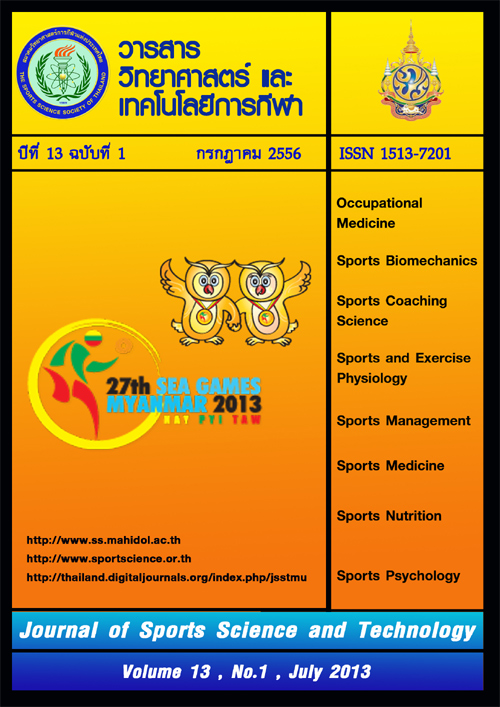THE DEVELOPMENT OF THE PERCEIVED SERVICE QUALITY SCALE: A STATE UNIVERSITY SPORTS CENTER
Keywords:
Fitness center, Service quality, Factor analysis, Scale developmentAbstract
The purpose of the study was to identify the dimensions of perceived service quality in a state university fitness center from point of view of the members and to develop a reliable, valid and applicable measurement instrument. Nakhonpathom province. A cross-sectional survey was conducted in fitness center of a state university. A total of 285 fitness center’s members of this state university were chosen using simple random sampling technique. This study had employed exploratory factor analysis with varimax rotation for factor extraction. Internal consistency, criterion-related validity, and multiple regression analysis were also used.
Results: The response rate was 98.59% or 281 members. The seven factors were obtained, explaining 76.93 % of total variance. The newly extracted factors are tangible, reliability, assurance, responsiveness, empathy, program quality, and expected outcomes. The internal consistency or cronbach alpha coefficient values for sub-scales were ranged from 0.86 to 0 .93 and this instrument had criterion-related validity with statistical significance. The most important factors for the university fitness center members were reliability, assurance and program quality.
The results of this study show reliability, validity, and applicability of the perceived service quality scale in assessing service quality for a state university fitness center. Based on the findings of this research, fitness center manager can use this instrument for identifying current levels of service quality, determining service areas that weak and in need for improving their service quality, attracting more new members and increasing the loyalty of their existing members. Moreover, this instrument will help a fitness center to better performance in current situation.
(Journal of Sports Science and Technology 2013;13(1): 89 – 112 )






